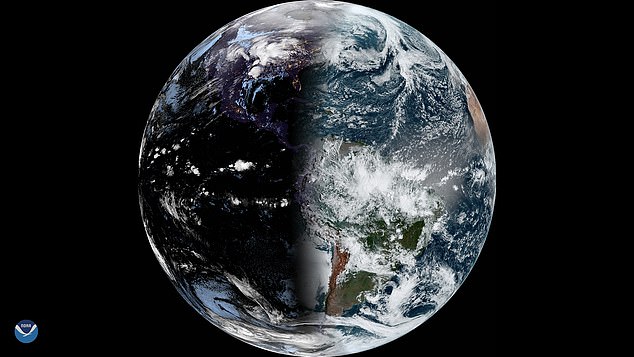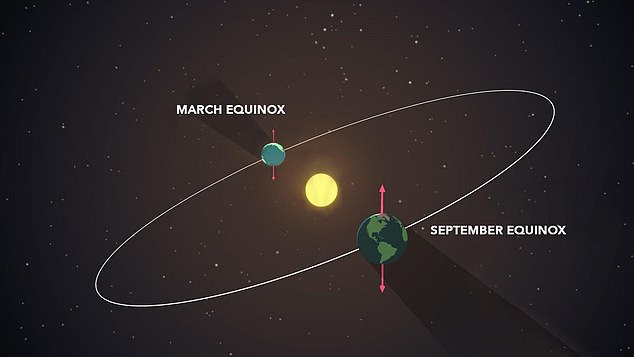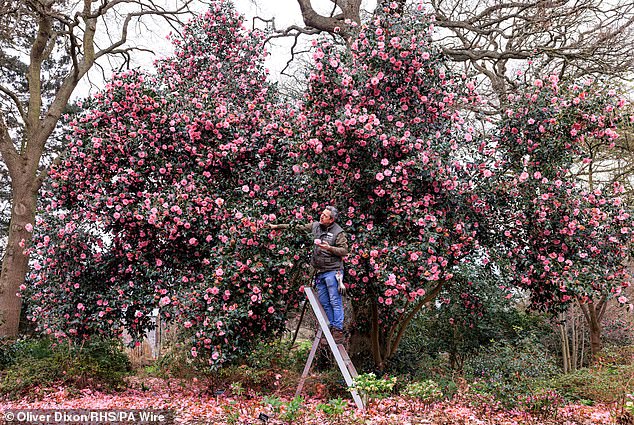Spring has officially started! Today is the Spring Equinox, as the sun shines directly over the equator, meaning winter is finally over
- Today is the Vernal Equinox that marks the beginning of ‘astronomical’ spring
- Tomorrow morning at 03:06 GMT the sun will pass directly over the equator
It’s finally time to pack your winter coats, hats and scarves – spring has officially sprung!
Today is the Vernal Equinox – also known as the Vernal Equinox – which marks the beginning of ‘astronomical’ spring.
Tomorrow morning exactly at 03:06 GMT, the sun will pass directly over the equator, causing almost equal amounts of day and night in all parts of the Earth.
“North of the equator, the March equinox will bring us earlier sunrises, later sunsets, gentler winds and budding plants,” NASA explained.
“With the reverse season, those south of the equator will experience later sunrises, earlier sunsets, colder winds and dry, falling leaves.”
It’s finally time to pack your winter coats, hats and scarves – spring has officially sprung!

Tomorrow morning exactly at 03:06 GMT the sun will pass directly over the equator, causing almost equal amounts of day and night in all parts of the Earth
In the Northern Hemisphere, the Equinox occurs twice a year.
The spring equinox usually occurs around March 20, while the autumnal equinox usually occurs around September 22.
“They take place between the summer and winter solstices and mark the point at which the sun crosses the path of the equator and comes to rest directly above the equator between the northern and southern hemispheres,” the Met Office explained.
During an equinox, day and night last approximately the same length.
“The vernal equinox marks the beginning of spring and from this day onwards the day is longer than the night,” the Met Office added.
“Similarly, the autumnal equinox marks the beginning of autumn, as the night becomes longer than the day.”

The spring equinox usually occurs around March 20, while the autumnal equinox usually occurs around September 22

Many trees and shrubs have ‘bounced’ early this year, and many are ‘laden’ with blossoms as early as February, thanks to last year’s weather, according to the Royal Horticultural Society
Maybe you’re a little confused, thinking we’re already in spring.
That’s because how you define the first day of spring depends on whether you’re talking about astronomical or meteorological spring.
Meteorological seasons are based on the annual temperature cycle and coincide with the calendar.
‘The meteorological seasons consist of dividing the seasons into four periods of three months each,’ the Met Office explains.
‘These seasons are split to coincide with our Gregorian calendar, making it easier for meteorological observations and forecasts to compare seasonal and monthly statistics.
‘According to the meteorological calendar, spring always starts on March 1; ending May 31st.’
Many trees and shrubs have ‘bounced’ early this year, and many are ‘laden’ with blossoms as early as February, thanks to last year’s weather, according to the Royal Horticultural Society.
Many gardens saw an early display of color from flowering plants, including magnolias, early cherries and camellias, the horticultural organization said.
